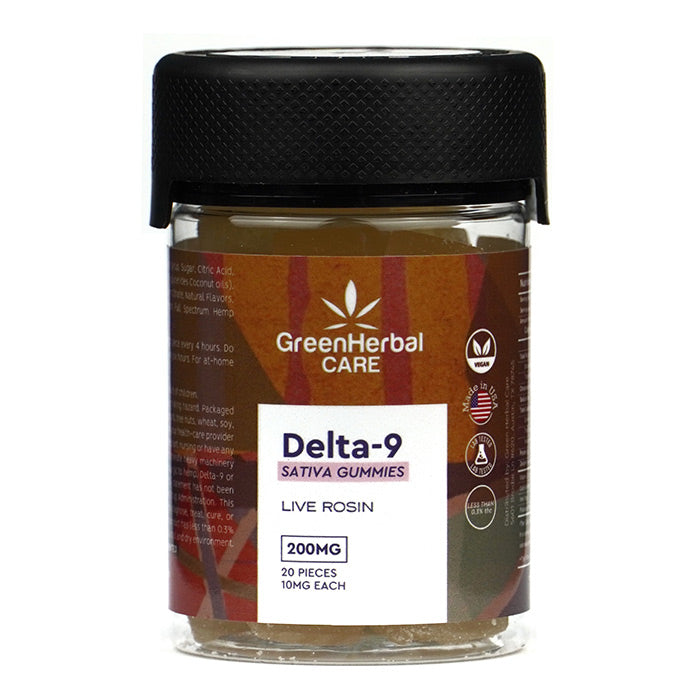The word cannabinoids generally refer to any chemical compounds, regardless of their structure or origin, that bind to the cannabinoid receptors in our endocannabinoid system (body & brain).
Cannabinoids produced naturally by plants like Cannabis Sativa and Black Pepper are known as phytocannabinoids. Those produced by our bodies are referred to as endogenous cannabinoids, aka endocannabinoids.
Research reveals that Cannabis Sativa plants naturally produce over 480 different chemical compounds. Of these compounds, at least 80-90 are cannabinoids. Today, the two most popular cannabis cannabinoids are tetrahydrocannabinol (THC) and cannabidiol (CBD).
THC is the most prevalent cannabinoid in cannabis plants. It is the psychoactive and intoxicating cannabinoid responsible for the euphoric high you get after smoking marijuana.
On the other hand, CBD's therapeutic benefits have been studied rigorously. Research continues to support its touted benefits, such as relieving anxiety, pain, stress, and PTSD. Consumers are especially pleased with CBD's nonpsychoactive properties, allowing them to reap its health benefits without getting high.
What Do Cannabinoids Do?
Humans and all animals have been found to have an endocannabinoid system often abbreviated as ECS. The ECS is a biological cell signaling system in our bodies that regulates many vital functions like immunity, mood, sleep, pain response, appetite, memory, and more!
Cannabinoids work in the same way as opioids. In that, they deliver their effects by interacting with specific receptors in our ECS. These interaction results in both wanted and unwanted physical and psychological effects.
For instance, most cannabinoids are thought to offer medical benefits like alleviating pain and inflammation. THC has also been found to cause side effects like distorted thinking, slower reaction times, paranoia, and anxiety.
The Effects Of Cannabinoids
Different cannabinoids interact differently with our cannabinoid receptors, offering unique benefits. Cannabinoids mainly interact with the CB1 and CB2 receptors in our bodies. While the CB1 receptors are primarily found in the brain and spinal cord, the CB2 receptors are mainly located in our immune system.
THC appears to have a higher binding affinity with the CB1 receptors. It mainly offers psychoactive effects like changes in mood, feelings, memory, and consciousness.
On the flip side, CBD has a very weak binding affinity for both the CB1, and CB2 receptors. However, it can antagonize these receptors in the presence of THC. Cannabidiol has also been found to mitigate the side effects of THC, such as anxiety and paranoia.
Cannabinoids are generally associated with the following effects:
- Feelings of euphoria and well-being
- Increased appetite
- Relaxation and enhanced moods
- Dry mouth
The Different Types Of Cannabinoids Produced By Cannabis Plants
You will be surprised to know that cannabis plants produce very little amounts of the cannabinoids they are most famous for, THC and CBD. Instead, raw and live cannabis plants synthesize cannabinoid acids. Cannabinoid acids are converted or activated into the beneficial cannabinoids we all love by heat, a process known as decarboxylation.
A good example is THCA that is converted into the intoxicating THC by the high degree of heat applied during smoking.
Note that cannabinoid acids have also been found to offer therapeutic benefits. They have antibiotic and insecticidal properties, which may be the reason cannabis plants produce them in the first place to defend themselves.
Besides THCA, cannabis plants also produce the following cannabinoid acids:
- Cannabigerolic acid (CBGA)
- Cannabichromenenic acid (CBCA)
- Cannabidiolic acid (CBDA)
- Delta 9-tetrahydrocannabinolic acid (THCA)
- Tetrahydrocanabivarinic acid (THCVA)
- Cannabichromevarinic acid (CBCVA)
- Cannabigerovarinic acid (CBGVA)
- Cannabidivarinic acid (CBDVA)
These acids are converted into the following cannabinoids via decarboxylation:
- Cannabigerol (CBG)
- Cannabichromene (CBC)
- Cannabidiol (CBD)
- Delta 9–tetrahydrocannabinol (THC)
- Tetrahydrocannabivarin (THCV)
- Cannabigerivarin (CBGV)
- Cannabichromevarin (CBCV)
- Cannabidivarin (CBDV)
Conclusion
People use cannabinoids for different reasons, both recreationally and medically. Cannabinoids are generally well tolerated by the body. They are not associated with fatal side effects or overdosing.
However, consumers should note that according to a recent study, prolonged use of cannabinoids can cause a tolerance. This would require you to consume higher doses to feel the same effects. You are generally advised to start with small doses and gradually work your way up until you find the appropriate amount that offers your desired effects.


